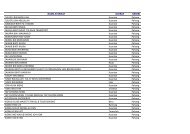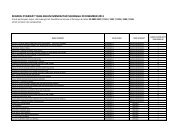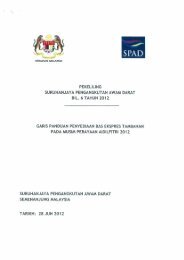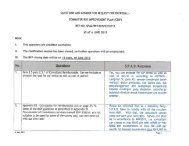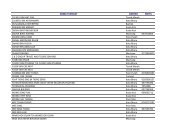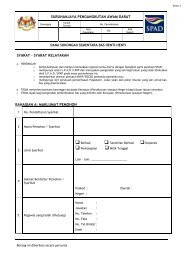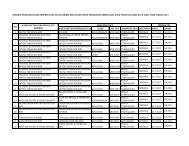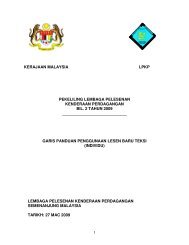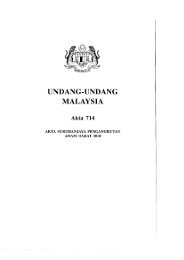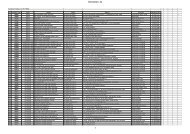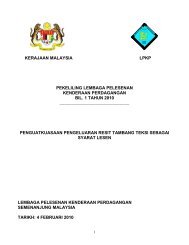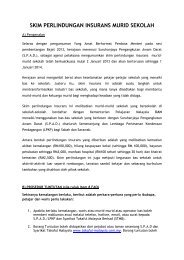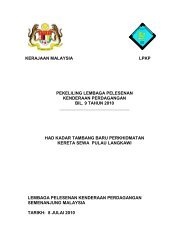Contents - SPAD
Contents - SPAD
Contents - SPAD
Create successful ePaper yourself
Turn your PDF publications into a flip-book with our unique Google optimized e-Paper software.
5.8) Transition<br />
In identifying that the most appropriate model going forward within the short to medium term is<br />
that of Gross Cost Contracting regime, it is important to consider how it is achieved.<br />
Initially, the Government will need to ensure that they have the correct mechanisms in place to<br />
deliver such a regime, and that the law enables such a model to prosper. These mechanisms<br />
therefore centre upon on a number of factors; such as:<br />
<br />
<br />
<br />
<br />
Legal ability to implement such a model;<br />
Ability to manage the process of implementing the regime;<br />
Knowledge and staff technical capability to define the network as per the government‟s<br />
requirements – as noted above, this could usefully draw upon Prasarana‟s existing<br />
expertise;<br />
Ability to deal with the giving and receiving of operator payments and „fines‟<br />
It is also important that the government is fundamentally aware that such a regime is likely to<br />
involve financial intervention at least in the early period to ensure that services are provided as<br />
per their exacting requirements.<br />
In terms of the operational aspects for delivery, the network would then be tendered by the public<br />
sector. The public sector would, through an open and transparent tendering process, stipulate:<br />
<br />
<br />
<br />
Full services specifications (including timetabling, headways & frequencies, routings,<br />
integration with other services, service numbers, origins, intermediate points and<br />
destinations, etc)<br />
Full Service standards (including what is required in terms of publicity and information,<br />
vehicle types and qualities, driver standards, etc)<br />
Fares (including levels, integrated ticketing, smartcard ticketing, etc)<br />
The Gross Cost Model, in essence, affords the government and the wider public sector the ability to<br />
stipulate how they would like the entire network to operate. The contract would be expected to<br />
build in „incentives‟ to encourage and reward good performance and fines to penalise poor<br />
performance.<br />
Owing to the significant „knowledge gaps‟ on how the bus network works or performs, part of the<br />
initial phases would be to generate data to support more robust procedures and potential<br />
alternative future regimes such as Net Cost Contracting.<br />
In order to generate this data, it is important to ensure than an effective Performance Monitoring<br />
Regime (PMR) is implemented to ensure that data flows freely between the public and private<br />
sector. A PMR would ensure that the operator returns full and complete data – specified by the<br />
public sector - on a frequent basis. Many contracting arrangements require a daily report to be<br />
submitted, including a „nil defects‟ report for those days when the entire service operated to<br />
specification.<br />
This information requirement will enable the public sector to develop Key Performance Indicators<br />
(KPIs) for the provision of services and for these KPIs to be monitored effectively. This will both<br />
create the level of understanding to manage and raise operator performance and to establish a<br />
more robust basis for future tendering.<br />
Page 84



